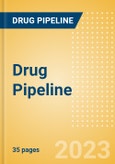This report includes an assessment of the disease epidemiology and 10-year patient-based forecast (PBF) across the 8MM for marketed and pipeline therapies with established mechanisms of action and cell & gene therapies by class, including early to late clinical stage pipeline products, with a launch date assessment by market for Head and Neck Squamous Cell Carcinomas (HNSCC). In addition to PBF sales data for the 8MM, this report contains sales forecast extrapolations for an additional 7 geographical markets (7M), totaling 15 major markets (15MM). These sales forecast extrapolations leverage data on pharmaceutical sales and drug availability from the publisher's World Markets Healthcare (WMH) and POLI Price Intelligence databases.
The report also analyzes the clinical and commercial landscapes of GBM, with pricing assumptions based on currently marketed products by class of cell & gene therapies, accompanied by a transparent forecast methodology.
Additionally, the report evaluates indication-specific unmet needs and competitive assessment, and identifies key future players in the cell therapy market.
Cell and gene therapy (CGT) is not an established therapy area in HNSCC, but there is an active clinical pipeline. Gene therapies dominate the HNSCC CGT pipeline with 10 agents in Phase II and 13 agents in Phase I. Autologous T-cell receptors (TCRs) follow close behind with 3 agents in Phase II and 7 agents in Phase I of development. However, CGTs only constitute a modest proportion of the overall HNSCC pipeline, reflecting the unproven efficacy of these modalities in this cancer type.
Cell and gene therapies are expected to capture a combined total of 8% of the HNSCC market by the end of the forecast period in 2031, reaching $262 million in 8MM sales (US, France, Germany, Italy, Spain, UK, Japan, and China).
Sales forecasts for the 7M (Australia, South Korea, Belgium, Denmark, Switzerland, Israel, and Canada) assessed in this analysis show the overall HNSCC market (cell therapies and established/traditional therapies) is expected to reach $163 million by 2031.
CGT agents show promise for partially meeting unmet needs in HNSCC and can provide the most value by producing more therapeutic options for patients with locally advanced HNSCC. CGTs are not expected to address the unmet need of identifying new druggable targets, with the top 5 targets in the HNSCC already being well-established targets.
Key Highlights
Forecast includes 8 countries
Forecast covers 2021-2031
Seven markets are extrapolated, obtaining a 15-market value for all GBM therapeutics
Scope
- This report includes disease epidemiology, a 10-year patient-based forecast for marketed and pipeline therapies with established mechanisms of action and cell & gene therapies by class, including early- to late clinical stage pipeline products with launch date assessment by 8MM market
Reasons to Buy
- Obtain cell & gene therapy sales forecasts across multiple regions
- Gain insight into promising early stage approaches
Our indication specific forecast models answer questions such as:
- What is the target patient pool for cell & gene therapies in each cancer indication?
- Which patient groups are more likely to receive these therapies?
- What does the cell & gene therapy clinical stage pipeline look like in each cancer indication
- What is the anticipated breakdown between autologous and allogeneic cell therapies?
- When will cell & gene therapies launch in each market?
- What is the total market value projected for the forecast end, in 2031?
Table of Contents
Companies Mentioned (Partial List)
A selection of companies mentioned in this report includes, but is not limited to:
- Replimune Ltd
- SQZ Biotechnologies
- Iovance Biotherapeutics Inc








